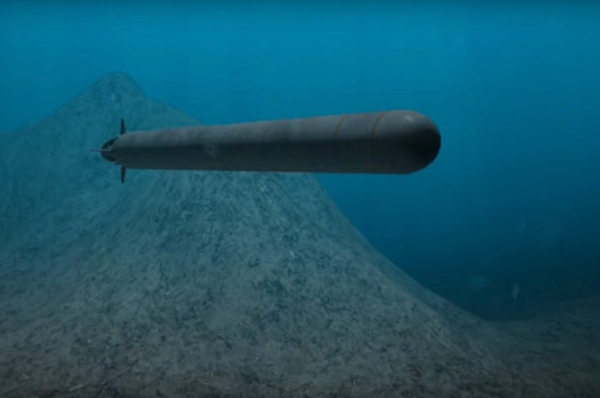 Parler
Parler Gab
Gab
Asteroid 2021 TL
The 230-foot asteroid named 2021 TL made its closest approach to Earth on Jan. 9 at a distance of 5.45 million kilometers (3.39 million miles) according to NASA's Jet Propulsion Laboratory. The airplane-sized asteroid is also moving at a speed of 30,420 kilometers (18,900 miles) per hour.Asteroid 2022 YD5
The 140-foot Asteroid 2022 YD5 came closest to Earth on Jan. 12. Racing at a speed of 38,340 kilometer per hour (10.65 km/sec), it made its closest approach to Earth at a distance of 3.17 million kilometers (1.97 million miles). Asteroid 2022 YZ2 The 260-foot Asteroid 2022 YZ2 is nearly the size of a building and made its closest approach to Earth at a distance of 6.4 million kilometers on Jan. 12. The asteroid's speed was 23,616 kilometers (14,665.54 miles) per hour as tracked by NASA.Asteroid 2022 YS5
The 130-foot asteroid named 2022 YS5 made its closest approach to Earth at a distance of 5.97 million kilometers (3.71 million miles) on Jan. 13. The asteroid will rush toward Earth at a speed of 21,528 kilometers (13,368.89 miles) per hour.Asteroid 2014 LJ and 2022 YH3
Two asteroids namely 2014 LJ and 2022 YH3 dashed toward Earth on Jan. 14 at a speed of 12,528 and 58,644 kilometers (7,786.20 and 36,417.92 miles) per hour, respectively.
Asteroid 2022 YR1
The 72-foot made its closest approach on Earth Jan. 1 at a distance of 6.24 million kilometers (3.88 million miles), based on the information given by NASA's Jet Propulsion Laboratory. The airplane-sized asteroid was moving at a speed of 21,708 kilometers (13,489 miles) per hour.Asteroid 2022 YS6
The 42-foot 2022 YS6 approached Earth on Jan. 1 at a distance of 1.79 million kilometers (1.11 million miles). The asteroid zoomed toward Earth at a speed of 34,956 kilometers (21,720.65 miles) per hour.NASA's NEO Surveyor to help find more NEOs, PHOs soon
These asteroids did not pose any kind of threat to Earth, but it is still critical to track their movement. NASA has deployed numerous Earth- and sky-based technologies like telescopes, satellites and others to monitor the movement of large asteroids. The NASA Authorization Act of 2005 commanded the agency to find and describe at least 90 percent of the NEOs more than 140 meters (459 feet) in diameter that come within 30 million miles of Earth's orbit. Objects of this size are likely to cause critical area damage should they impact Earth. NASA's NEO Surveyor, a space telescope designed to look for the hardest-to-find asteroids and comets that stray into Earth's orbit area, will help the agency accomplish that task. It is now transitioning into the final design-and-fabrication phase and establishing its technical, cost and schedule baseline. "NEO Surveyor represents the next generation for NASA's ability to quickly detect, track, and characterize potentially hazardous near-Earth objects. Ground-based telescopes remain essential for us to continually watch the skies, but a space-based infrared observatory is the ultimate high ground that will enable NASA's planetary defense strategy," said Lindley Johnson, NASA's Planetary Defense Officer at PDCO. Follow Space.news for more news about asteroids coming towards Earth. Watch the video below to know how NASA successfully crashed an unmanned spacecraft into an asteroid in an attempt to redirect it. This video is from the GalacticStorm channel on Brighteon.com.More related stories:
Asteroid nearly collides with Earth in close call fly-by. "Potentially hazardous" asteroid that flew by the Earth last week was discovered by amateur astronomer 2 New minerals discovered inside meteorite that crashed to Earth. Earth to have "close encounter" with asteroid this week; event no cause for concern, says NASA. NASA details complex mission to collect rock samples from asteroid Bennu. Sources include: Hindustan Times.com MSN.com MSN.comGay activists freak out online after learning that Fauci was responsible for AIDS epidemic
By Ethan Huff // Share
Flame retardants in household items linked to chronic diseases
By Olivia Cook // Share
California rumble: Golden State to experience series of MEGA EARTHQUAKES
By Kevin Hughes // Share
Astronomers discover 3 galaxies from EARLY UNIVERSE
By Kevin Hughes // Share
Governments continue to obscure COVID-19 vaccine data amid rising concerns over excess deaths
By patricklewis // Share
Tech giant Microsoft backs EXTINCTION with its support of carbon capture programs
By ramontomeydw // Share
Germany to resume arms exports to Israel despite repeated ceasefire violations
By isabelle // Share










